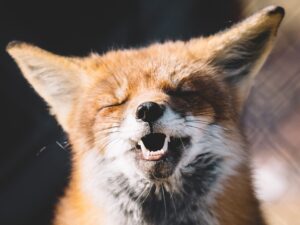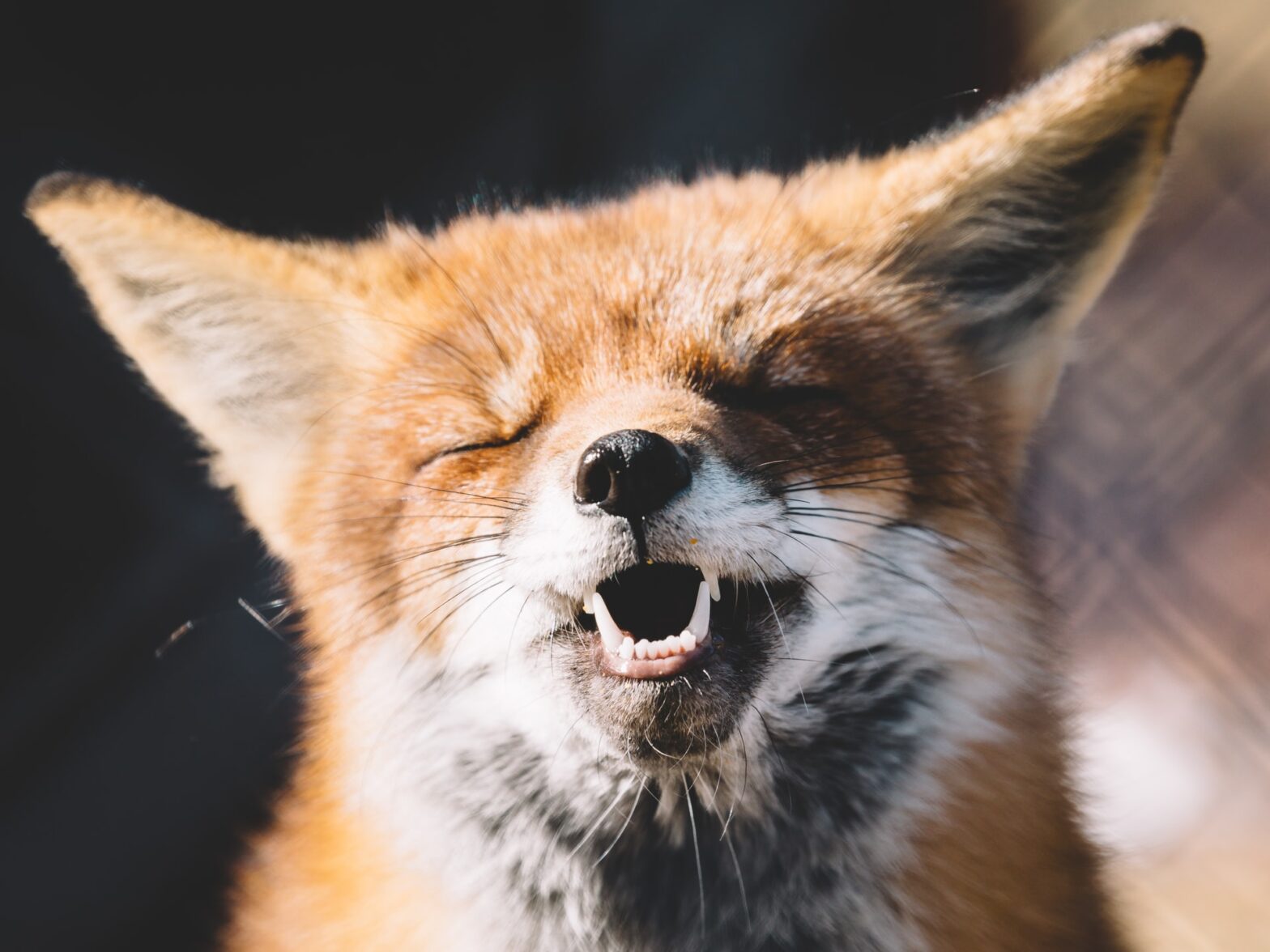Cunning as a Fox is a common expression referring to being exceptionaly clever, cunning, or shrewd, especially in devious or underhanded ways. Foxes are certainly shrewd and highly adaptable. But there is little devious or underhand in their ways.

Scent plays a significant part in the world of a fox. So, foxes leave their mark. Foxes can probably detect the combination of more than sixty different components of the scent trails they leave behind. As with much scent marking it provides information on who, what, where and when. Now, that is cunning. But foxes are acute sound engineers, and with sharp night vision, they are adept at finding their prey rustling in the undergrowth.
Only recently has the detailed chemical composition of fox urine been determined. Whilst sharing many elements with other species, including plants, some are unique to foxes. One component is so potent that even a tiny drop produces aversive reactions from other animals.
Chemical language
Foxes also have two scent glands, with a patch on the tail known as the “violet gland” because of its floral odour, and a pair of sacs either side of the anus.
Forensics is the stuff of modern crime stories. Analysis of a sample taken from the crime scene reveals its chemistry. The peaks and troughs of the graph indicate the presence of different elements. There is much that forensic scientists can interpret. So for the fox, scent can pack a punch. It can also provide a multitude of information. Foxes use a chemical language, describing who, what, where and when – a multidimensional picture of the world about them. This capacity is ecological intelligence. Cunning as a fox? A cunninng fox knows what is going on.
Hearing for the fox
But look again at the fox. Alert to a sound, they swivel their large ears independently, precisely pinpointing its source. They are masters of sound engineering, honed for their diet. Research finds that the accuracy with which foxes locate a sound increases gradually to 3.5 kHz, at which they are most sensitive. Perhaps unsurprisingly, this is the sound frequency of gnawing and rustling rodents and the calls of some game-bird chicks. “Yum, yum!” said the fox. Cunning as a fox? Or highly adapted?
Seeing in the dark
But also look into the fox eyes. Like those of a cat, they can see well into the distance. The tapetum lucidum (bright tapestry) layer in their eyes gives them night vision – strategically placed just behind the retina, reflecting light, making their eyes glow back in the dark, and doubling the light on the retinal cells – with powerfully adapted eyes, Foxes see in the darkness.
Adaptive evolution
But that is not all in the vision of Foxes. Colours (wavelengths) are focused differentially by the lens. The lens comprises several proteins (crystallins) each concentrated in concentric zones, from middle to outer. Each zone focuses a different spectral range (colour) onto the light-sensitive retina. In low light, the pupils are wide open, allowing more light to enter like the aperture of a camera. In daylight, the pupils constrict, reducing the amount of light. But the slit-like pupils still allow sufficient light of different wavelengths through the lens, retaining colour contrast. If the pupils were round, as in many other mammals, this would not be so. Now, that too is cunning as a fox.

The fox eye is an example of dynamic evolution, where adaptation in one part of an organ system influences or allows adaptation in another. The constraint of one feature influences the development of another. This push and pull in functionality gives change a directional momentum even in evolution. Vertebrate eyes have undergone rapid evolutionary changes involving a variety of components.
Development of the eye requires cooperation from cells of different embryo tissues. Just think of the logistics of arranging the crystallin proteins of the lens.
Social being of foxes
Foxes live as social groups, often with equal numbers of males and females. Unlike their urban cousins, rural foxes are very shy. You are more likely to see an urban fox in the street or a garden. Yet, they are not separate species. Urban foxes have adapted to their habitat. Proximity to humans means the foxes can better read them and adjust to their behaviour. The fox in the video appears aware of the intrusion, even from a distance.
Foxy voices
Foxes talk. Research identifies more than twenty different kinds of sound. It is also suggested that foxes, like humans, have distinctive voices. Communication has a purpose. Eliciting responses in others, It warns, encourages, and guides. Much of the meaning of their sounds will be contextual and is another example of ecological and social intelligence.
While foxes may scavenge and forage for food together, they don’t hunt as a pack, other than incidentally. Their close sociability is more protective and nurturing than for hunting. Rural foxes feed on rabbits, rodents and birds, and also wild fruits and vegetables. Foxes are omnivores. Urban foxes eat almost whatever they can find, including scavenging in bins for food waste. We are very much part of their urban habitat. Urban foxes have adjusted to city life, and many have lost their instinctive caution around humans.
Living with humans
It isn’t clear what factors ‘urbanised’ the fox. However, foxes have always lived in some degree of proximity to humans, and urban foxes are not new, if now more common. But, this naturally shy mammal in the countryside appears less cautious in urban areas, and that is cunning as a fox.
Perhaps the problem is the increasing human population, with housing developments encroaching their natural habitat. Living with ever-closer proximity to humans forms part of their ecological intelligence. So, as the pressure in the countryside grew, those foxes adapted to urban living grew in numbers, making their presence more obvious.

Ray Noble is a chartered biologist and Fellow of the Royal Society of Biology. He writes extensively on biological theory and philosophy. He was Deputy Dean of Life Sciences at UCL, London, and Graduate Tutor in Women’s Health.

